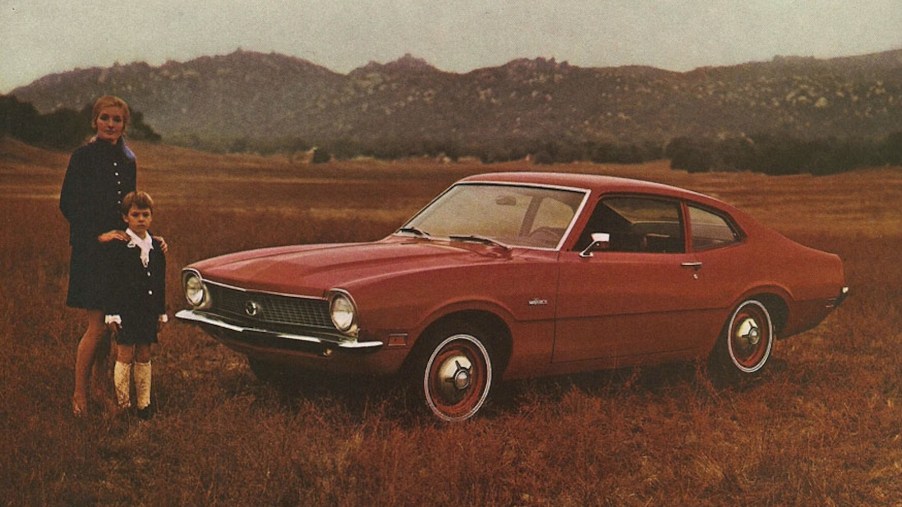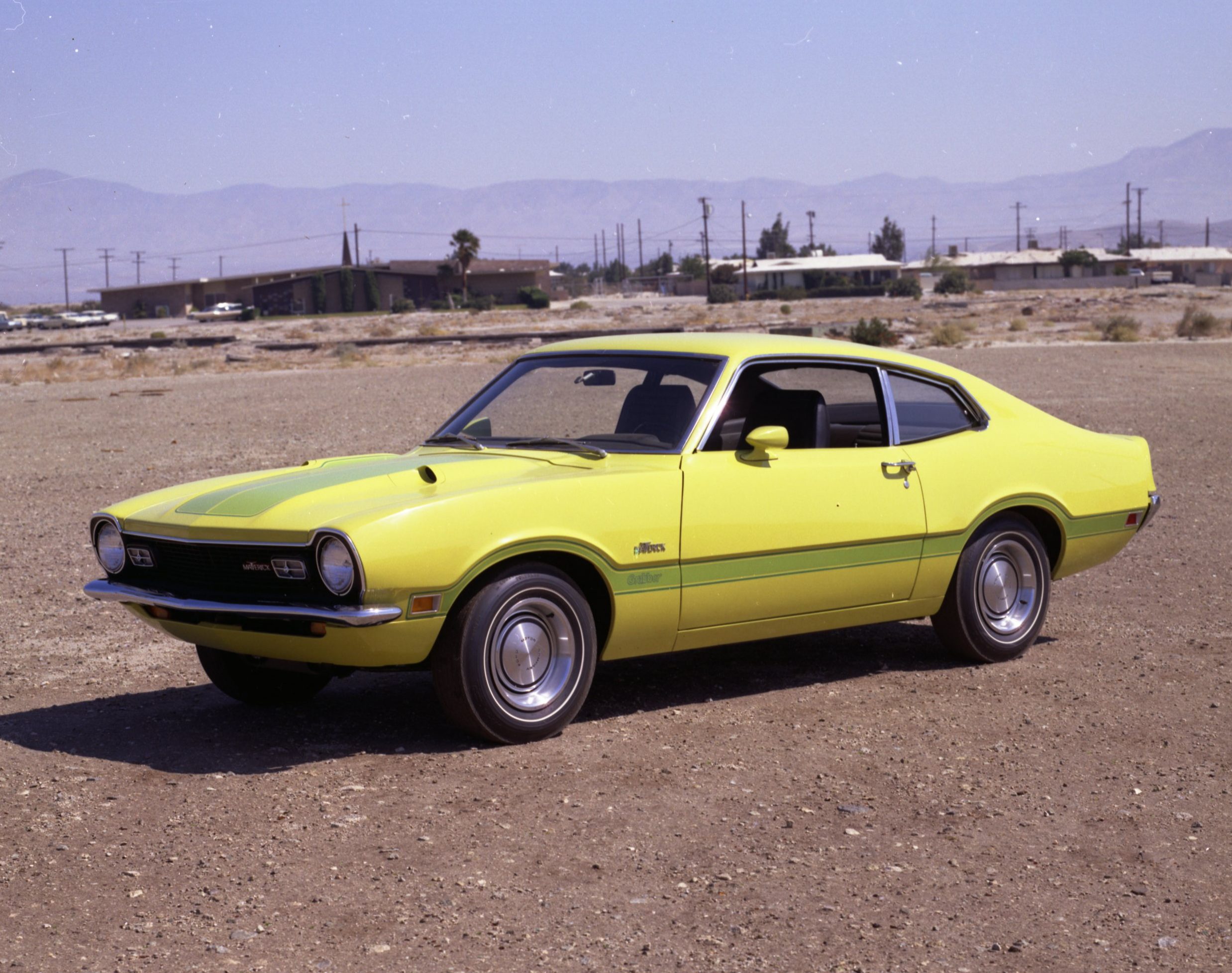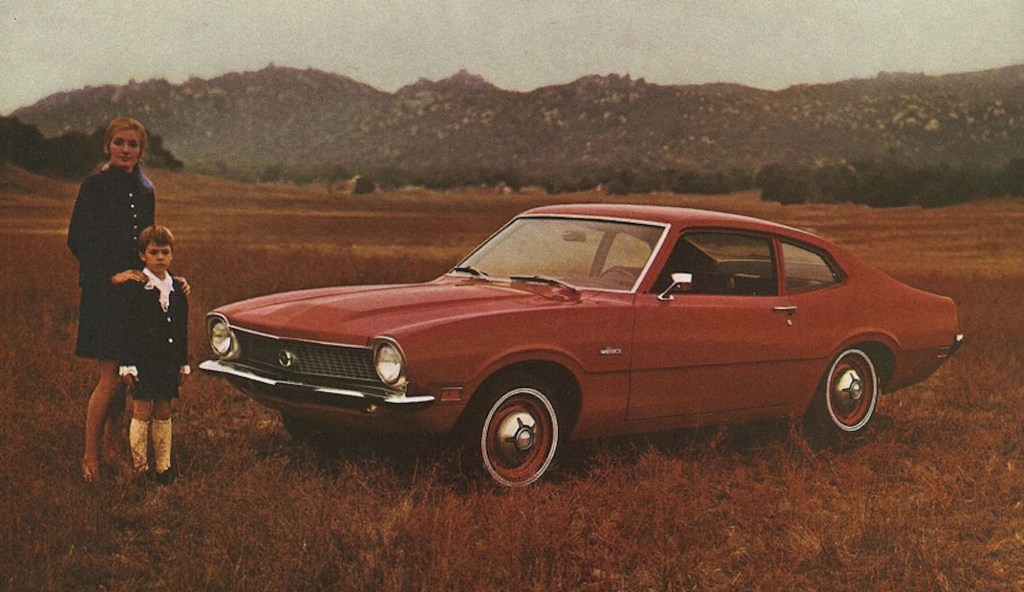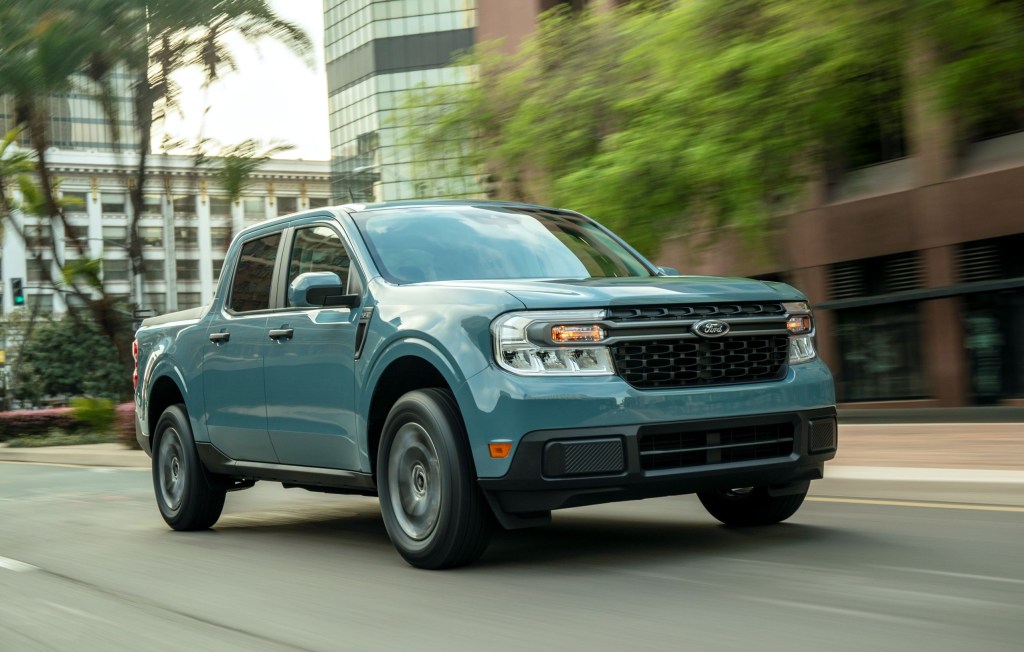
A Look Back at the Original Ford Maverick
The new Ford Maverick is a light hybrid pickup truck, good on gas and surprisingly strong. But the original Ford Maverick that rolled off the production line in 1970 was completely different. Rather than a four-door truck, it was a two-door coupe (that would eventually evolve into a four-door sedan in 1971). Falling somewhere between Mustang, another name recently revived, and the Pinto, a name that’s likely gone for good, the Maverick was Ford’s attempt at a budget car with flare.

The original Ford Maverick was a simple, stylish compact
By the late 60s, Ford’s best-selling Falcon was starting to drag, with sales lowering each year. It was time for a refresh, one that would fill the budget hole the Falcon would leave while updating the styling. Thus, in 1970, the Ford Maverick was born, and initially, people loved it.
It wasn’t expensive, and Ford argued that it was easier to maintain than the foreign cars flooding the states. In fact, the Volkswagen Beetle was often used as a comparison when highlighting the Maverick. The Maverick had about 50 more horsepower than the Beetle, and bragged about being able to “cover 417 feet in ten seconds from a standing start.”
That odd statistic was courtesy of the 120 hp straight-six engine, though the base model straight-six only produced 105 hp. But that engine wasn’t even new, nor was the frame. In fact, other than the body shape, the Maverick was just a Ford Falcon with a new coat of paint. The reason for this is because Ford expedited production of their budget car as even cheaper foreign options washed ashore. But even with the strong competition, the Maverick managed to hold its own throughout the 70s.
The Ford Maverick’s success and extended life

According to Hemmings, from 1971 to 1977, Ford sold over 2 million Mavericks. 1974 alone accounted for over 300,000 of those sales. And as the Maverick was hitting its peak, the classic Beetle it loved to compete with was starting to die down. Only 226,000 Beetles were sold according to The Samba, and that trend would continue downwards until the last classic Beetle rolled off the line in 1979.
By 1975, however, Maverick sales were starting to dip as well. The original plan was to get rid of the Maverick and replace it with the luxurious Granada, but due to the gas crisis, the Maverick’s economical philosophy made sense to keep a little longer. That mentality got the car to 1977 before the name was retired. That is, until now, with the all-new Maverick truck. And while the two are very different in the looks department, there are a few similarities one could pull
How the Maverick of yesteryear compares to the Maverick of today

One’s a truck, the other’s a coupe. One is a hybrid, the other didn’t even know what a hybrid was. On the surface, there’s nothing to compare. However, if you really stretch the logic, there are a few similarities between the Maverick and the Maverick.
For starters, both are aimed at an economical market. In the 70s, 22.5 mpg wasn’t terrible. It wasn’t great, but you could do a whole lot worse. Likewise, the new Maverick’s 40 mpg in the city and 500+ mile range on the highway is incredibly useful. Both were also meant to have some flare to them, appealing to what people wanted but couldn’t afford/needed to be practical. Back then it was muscle cars, and today it’s trucks.
Funnily enough, the Ford Maverick truck is still being compared to foreign budget cars today. So while the original Maverick may have given the hybrid truck its name, the two have more in common than one might think. And even if this logic is a reach, it’s always good to look back and see how things change.


